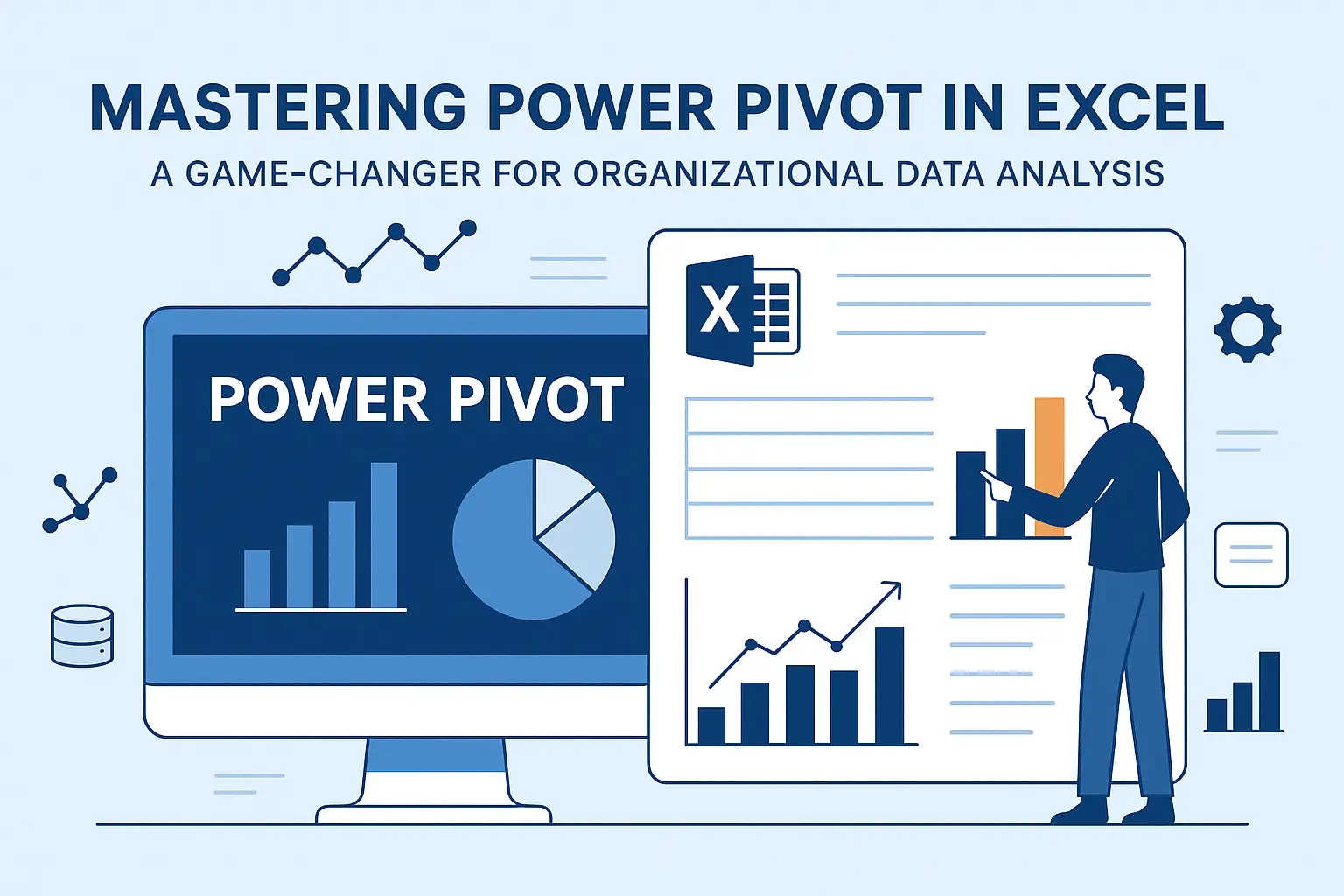Mastering Power Pivot in Excel: A Game-Changer for Organizational Data Analysis
In the world of modern data analysis, Power Pivot in Excel has become one of the most powerful yet underutilized tools available to analysts and decision-makers. For organizations managing increasingly large and diverse datasets, Power Pivot offers advanced data modeling, seamless relationship management, and lightning-fast calculation capabilities that can transform the way decisions are made.
Whether you’re in aviation safety, sales, HR, or finance, mastering Power Pivot is a critical step toward building a scalable, efficient, and insightful data analysis framework.
What Is Power Pivot?
Power Pivot is an Excel add-in that allows users to create data models, establish relationships between tables, and perform advanced calculations using Data Analysis Expressions (DAX). Unlike traditional PivotTables, Power Pivot can:
- Handle millions of rows of data efficiently
- Connect to multiple data sources (Excel tables, databases, SharePoint, etc.)
- Perform calculations using DAX, a language similar to Excel formulas but more powerful
It enables Excel to operate like a lightweight Business Intelligence (BI) tool within the familiar interface you already use.
Why Power Pivot Matters for Organizations
In traditional Excel analysis, data often lives in multiple tabs, files, or even departments. This fragmentation leads to:
- Inefficient workflows
- Redundant calculations
- Human error
- Limited scalability
With Power Pivot, organizations can:
- Centralize and model data from diverse sources
- Create relationships across tables without VLOOKUP or INDEX/MATCH
- Build automated, refreshable dashboards
- Empower non-technical users to explore data securely
These benefits make Power Pivot an ideal tool for any business embracing data-driven decision-making.
Real Business Examples Using Power Pivot
Example 1: Sales Forecasting Dashboard
Business Need: A sales team wants to analyze performance by product, region, and month, using live data from multiple spreadsheets.
Power Pivot Workflow:
- Connect all Excel sales files using Power Query.
- Load the clean data into Power Pivot.
- Create relationships between Products, Regions, and Calendar tables.
- Use DAX to create measures:
Total Sales = SUM(Sales[Amount])Sales YoY = CALCULATE([Total Sales], SAMEPERIODLASTYEAR(Calendar[Date]))
- Build a PivotTable that updates instantly across hundreds of thousands of records.
Example 2: HR Headcount Tracker
Business Need: HR wants to track department headcount trends and attrition over time.
Power Pivot Workflow:
- Import HR master data, exit logs, and hiring records.
- Relate Department table to Employee and Exit tables.
- Create DAX measures:
Current Headcount = COUNTROWS(Employee)Attrition Rate = DIVIDE(COUNTROWS(Exit), [Current Headcount])
- Visualize the results using slicers and charts.
Example 3: Project Performance Monitoring
Business Need: A project manager wants to monitor task completion, delays, and resource usage.
Power Pivot Workflow:
- Combine tasks, team assignments, and time logs.
- Create task completion rate:
Completion % = DIVIDE(COUNTROWS(FILTER(Tasks, Tasks[Status]="Complete")), COUNTROWS(Tasks))
- Monitor delays with:
Delayed Tasks = CALCULATE(COUNTROWS(Tasks), Tasks[Status]="Delayed")
These examples reflect just a few of the countless ways businesses use Power Pivot to bring clarity to complex data.
Key Features of Power Pivot to Learn
- Data Model View
Drag and drop tables and define relationships just like a database. - DAX Formulas
Build powerful calculations like:CALCULATE(SUM(Reports[Severity]), FILTER(Reports, Reports[Type] = "High Risk"))RELATED(Employee[Department])
- Measures vs Calculated Columns
Understand when to use each for optimal performance. - PivotTables Connected to the Data Model
Create highly dynamic and interactive reports.
Integrating Power Pivot With Other Excel Tools
Power Pivot works beautifully with:
- Power Query: For cleaning and shaping data before loading it into the model
- Power BI: For more advanced visualizations, using the same DAX formulas
- Excel Tables & Named Ranges: As entry points for structured datasets
Combined, these tools form a powerful data pipeline inside Excel.
Final Thoughts: Why Power Pivot Deserves a Place in Your Workflow
If you’re relying on spreadsheets to run any part of your business, Power Pivot is the upgrade you didn’t know you needed. It allows you to scale your analysis, reduce complexity, and improve data confidence across the organization.
Whether you’re building safety dashboards, forecasting revenue, or simply managing team performance metrics, Power Pivot transforms Excel into a serious analytical platform.
Ready to build smarter models and streamline your reporting?
Further Reading:
Microsoft Power Pivot Overview
Official Microsoft introduction to Power Pivot in Excel
🔗 https://support.microsoft.com/en-us/office/power-pivot-overview-and-learning-7f61c05a-6b1b-4add-a244-ec5c13e1d9d2
DAX Reference by Microsoft
Complete guide to Data Analysis Expressions (DAX)
🔗 https://learn.microsoft.com/en-us/dax/
Power BI – Microsoft’s Data Visualization Tool
For those looking to extend beyond Excel
🔗 https://powerbi.microsoft.com/
Power Query in Excel
Used alongside Power Pivot for data transformation
🔗 https://support.microsoft.com/en-us/excel/power-query-overview-and-learning-7104fbee-9e62-4cb9-a02e-5bfb1a6c536a


